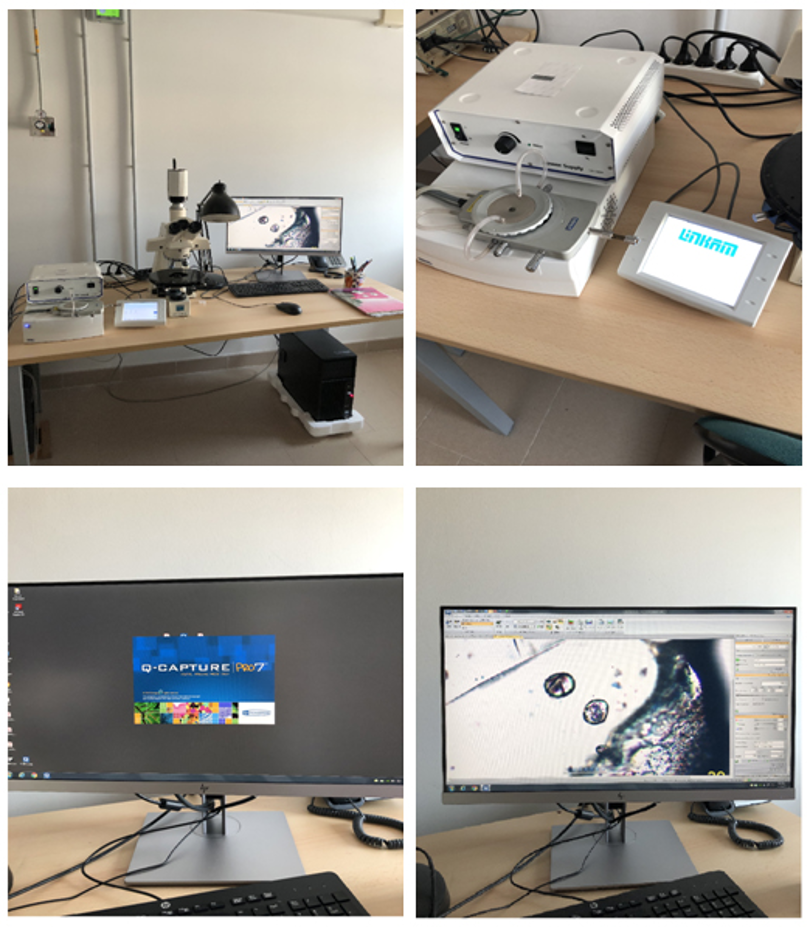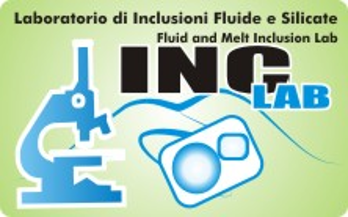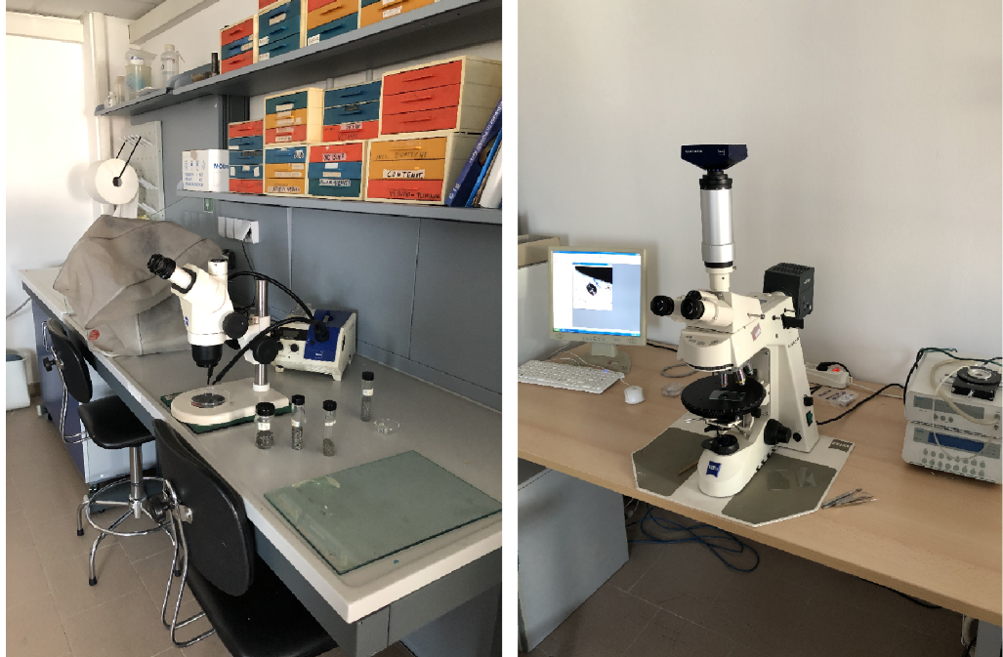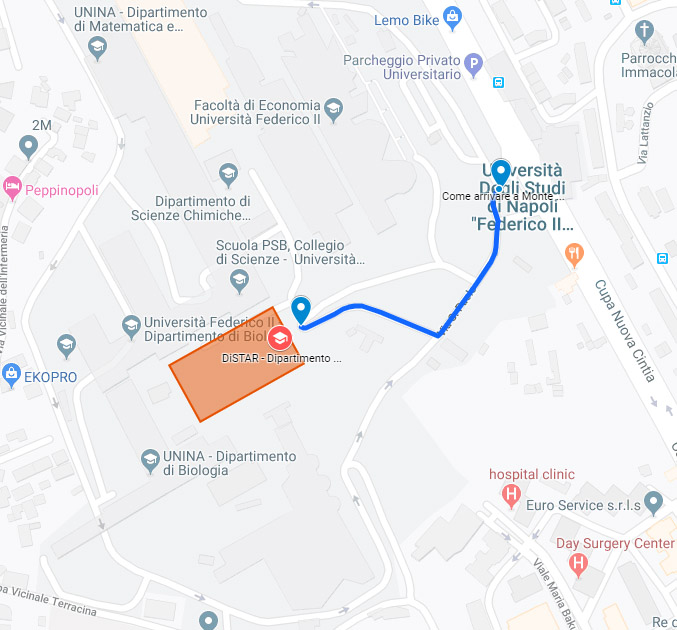Responsible: Dott.ssa Manuela Rossi and Prof. Annamaria Lima
Room: L3 3.05
This laboratory is devoted to fluid inclusions (FI) and the silicate/melt inclusions (MI) study in rocks bearing crystals. When a mineral forms in the presence of fluid phase, fluid droplets may be trapped as defects in the growing crystal to produce fluid inclusions. Fluid inclusions are also produced when mineral precipitation occurs in the process of healing fractures in existing minerals. The fluid phase may be liquid or vapor, and may include aqueous solutions, volatiles such as CO2, CH4, N2, etc., liquid hydrocarbons, or silicate, carbonate or sulfide melts. FI are the only direct evidence of the deep fluids that contact and react with rocks. They contribute to the understanding of diagenetic systems; hydrothermal fluid evolution and ore deposit formation, oil migration. FI provide the best source of information concerning the occurrence of fluids in natural samples and the distribution of fluids in the Earth and planetary systems as well.
 A) Quartz containing FI. The dark "clouds" at the top right are aggregates of thousands of inclusions, some of which were trapped during quartz formation while others during subsequent events. B) Fluid inclusions in quartz crystal. C) Fluid inclusions with "daughter crystals".
A) Quartz containing FI. The dark "clouds" at the top right are aggregates of thousands of inclusions, some of which were trapped during quartz formation while others during subsequent events. B) Fluid inclusions in quartz crystal. C) Fluid inclusions with "daughter crystals".
Silicate Melt Inclusions (MI) are small droplets of silicate melt, typically 1–100 μm in size, that are trapped in surface irregularities or defects of crystals during their growth in a magma body. They typically contain variable amount of crystals, glass and/or vapor, are very common and usually quite easy to identify in volcanic rocks. Upon trapping in their host crystals, MI behave as closed and isolated systems, retaining much of the original composition of the melt (including its volatile content). MI are like time capsules, and can record the pre-eruptive volatile content that usually is lost during degassing or magma differentiation, and allow researchers to trace the evolution of magma from its formation at mantle depth, to its release to the surface, step by step. Therefore, MI are an ideal tool to shed light on igneous processes such as fractional crystallization, magma mixing and fluid exsolution. Recently, thanks to the new generation analytical techniques (ionic microprobe, Raman, Laser Ablation coupled to the ICP-MS), which allow the determination of trace elements, stable isotopes and radiogenic isotopes, even on infinitely small portions of matter, the MI study has experienced significant progress.
INSTRUMENTATION SUPPLIED IN THE LABORATORY:
- 2 transmitted & reflected light ZEISS Axioskop microscopes
- 3 transmitted & reflected light Leitz microscopes
- 2 binocular microscopes (stereomicroscope)
- Linkam 600 Heating and cooling stage
- Linkam 1350 Heating stage
- Linkam 1400XY High T stage
Complete sample preparation facilities for fluid and melt inclusions studies and:
- ultrasonic cleaning bath
- Isomet cutter
- 2 lapping and polishing machines (manual)
 Axioskop microscope, Linkam 1400 XY High T stage. Image and video capture software
Axioskop microscope, Linkam 1400 XY High T stage. Image and video capture software
 English
English  Italiano
Italiano 








